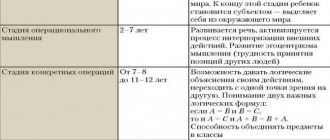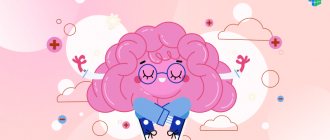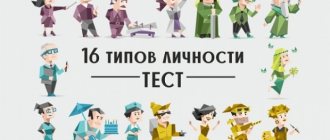Image is an image, a stereotype, a set of certain qualities that has developed in people’s minds that are associated with an individual. The concept of reputation is very close to this concept.
Initially, the concept of image was used in the business environment as the main means of influencing consumers. Later, image began to be understood as the most important category in socio-political sciences and psychology.
Stereotypes have been created in people’s minds for years under the influence of what they read in newspapers, magazines, books, seen on TV and heard in groups. The policy of the country’s leadership, the intellectual level of the individual, and the general economic level of the country play a significant role in the formation of such stereotypical ideas.
For example, a large number of actors, having played one role that is most memorable to the audience, often complain that the image and reputation of the movie hero has spread to the actor in real life. That is, even close people, acquaintances and friends stopped perceiving the actor in isolation from the role he played. In fact, a comedic or tragic character in the minds of people became inseparable from the artist who performed him on stage or in films. For many actors, it was impossible to change the image of a movie hero even until the end of their lives.
Another example of image and reputation is the idea of expensive cars as a symbol of social success, happiness and material wealth. The image of great opportunities and position in society is also ensured by expensive real estate.
Recently, the topic of image formation (of a person, a company, a show business star, a businessman, a state or a politician) has acquired significant importance in life. And this is understandable, because what each subject demonstrates and puts on display has a significant influence on most of his environment. Therefore, the right approach to the formation of a personal image is the key to the success of many events.
Image is the same thing as a name, a concept inextricably linked with the idea of a person. This is a person's calling card. This is the impression that other people recreate in their memory when they remember you.
Image: concept and types
Today there are many definitions of image. If we generalize different points of view, we can characterize an image as a specially created image of an object, used for certain purposes. Depending on the object, the image is divided into types.
Types of image:
- person's image;
- image of the organization;
- image of the territory;
- image of the subject.
In fact, an external image can be created for any object, you just need to understand for what purpose this is being done. At its core, an image represents a short amount of well-chosen, most beneficial information that needs to be conveyed to a person.
The significance of the discoveries obtained
Image is a powerful tool of influence, which in the process of communication has a dramatic impact on the perception of the message. This phenomenon itself is the result of social interaction, without which there can be no talk of any image. It always has a symbolic nature, since it is thanks to signs and symbols that it is possible to assign an individual with a certain image to a particular social group. The sign has the function of replacing certain objects or phenomena. Thus, an individual image is a way to tell the audience that its bearer is the owner of certain qualities and properties.
The need to create an image
The types of image and the functions that it performs should help a person interact with the world around him most effectively. The functions of image include:
- the opportunity to demonstrate the best qualities, individuality, and moral values of a person;
- the influence of image on a person’s psychological comfort (increases self-confidence and one’s capabilities, has a positive effect on a person’s communication abilities);
- opportunity to demonstrate business qualities and professional competence;
- the ability to smooth out existing shortcomings by refocusing attention on the advantages;
- the opportunity to attract attention to your person and make the right impression;
- the ability to interact with different categories of people, ensuring greater efficiency in the business sphere.
When creating an image, it is important to use reliable information about a person and his real qualities, because the deception will quickly be revealed and the person will ruin his reputation. An image that is far from a person’s real personality is very difficult to maintain and broadcast to others.
Perfumery
A person is associated, first of all, with smell. As Jean-Paul Guerlain says: “Perfume is the most intense form of memory.” They emphasize a person’s individuality and give his appearance uniqueness and sophistication.
Perfume is an integral part of the image. When choosing perfume, you must take into account that you should not only like the smell, but also match the image you have chosen. It is necessary to correlate the smell with your character, temperament, mood, clothing style, and age.
Perfume is a means of not only attracting attention to oneself. They are often used as a means of seduction, since they are capable of capturing the power of the senses and creating an inexplicable attraction. The power of their influence is enormous, and with the right choice, their possibilities are endless.
The magic of perfumery is the ability of specialists working in this field to recreate almost any smell. On store shelves you can find perfume products with the smell of blooming gardens, the aroma of steppe herbs or exotic plants, as well as the smell of a sea breeze.
Perfume smells affect your mood; they can either improve or ruin it. A poorly chosen scent can cause headaches or awaken distant negative memories with which it is associated. A skillfully selected perfume scent brings joy and improves your mood.
Personal image
Each person has an individuality that is unique to him. It consists of a set of certain qualities, temperament and character of a person, his worldview and moral principles. Types of human image:
- Personal.
- Business.
Using various individual qualities of a person, various types of personal image are created. For example, in order to fit into a new team, a person creates a reputation for himself as a “simple guy” or “the soul of the company,” etc., depending on the qualities that he possesses. Personal image consists of certain characteristics that help build the desired image of a person. They take into account the various channels of information perception that a person uses.
Characteristics of personal image:
- Habitar (person’s appearance): clothing style, hairstyle, makeup, manicure, perfume, neatness and grooming. A well-groomed, well-dressed person is subconsciously perceived as worthy of trust and attention.
- Mimic: facial expressions, eye expression, smile, mobility and artistry of the face. The ability to express emotions through facial expressions makes a favorable impression on the interlocutor.
- Verbal: sound of voice (timbre, intonation), semantic content of speech, expressiveness of speech, literacy and accessibility of presentation. A person who masters the art of communication is able to influence and make the necessary contacts.
- Kinetic: human movements, gestures he uses, gait, posture. The human body transmits its internal state through movements and postures.
- Material: property, things surrounding a person. A person’s house, the car he drives, the things he uses can tell a lot about a person.
- Mental: beliefs, worldview, morals, principles, stereotypes. A person’s worldview and beliefs make him interesting to others or, conversely, unpleasant.
- Background: what friends, colleagues, and the media say about a person. A person's reputation can play into a person's hands or against him. Therefore, the image largely works for the reputation. And when the necessary reputation is created, it works for the image.
- Internet: activity on social networks, what a person writes, what photos he posts on the Internet. The Internet has become an integral part of human life, so it is an excellent source of information about a person.
WHAT IS STATUS COMPOSED OF?
Our genes, upbringing, and environment - everything participates in the formation of status. It is affected by both what does not depend on us and what we can change.
Physical data is important: a taller, stronger and more attractive person has a higher status. The ratio of facial width to length matters: the larger this indicator, the higher the testosterone level. Such men are more aggressive, stronger and financially luckier than long-faced men. Women are more likely to agree to a second date with such a person.
Some social theories say that people increase their status in a group by producing important benefits for everyone rather than by aggression. However, the acquisition of high status is facilitated by a threatening appearance, despite the fact that this has no connection with the public good.
Extroverts have a better chance of achieving high status than introverts. Neuroticism is negatively correlated with status in men: they “shouldn’t” feel fear, doubt and sadness. Even a beautiful name plays a role in increasing status: the chances of getting a job for a person with a good-sounding first and last name are many times greater than for a person with a dissonant one. The education of parents and their attitude towards the education of their children also influences: the presence of books in the home of a teenager at 14 years old predicts his future status, university studies and the number of years of education.
RAT STATUS
Didier Desor, an experimenter from the laboratory of biological behavior at the University of Nancy, decided to find out how power is distributed in the rat community.
The scientist placed six animals in one cage, leaving them the only way to the feeder with food - through a pool of water. Soon the roles in the group were divided into two exploiters who had never swum at all, two exploited swimmers, one independent swimmer and one non-swimming scapegoat. The rats were fed according to their ranks. The miners dived into the water and brought food. The exploiters took away the food, the rest got the leftovers after the “feast”. An independent individual was strong enough to get food and defend it. Everyone beat the scapegoat, and he was content with food, which the other rats refused.
The experiment was repeated in 20 cells, and everywhere such a hierarchy was built automatically.
It is curious that, no matter how animals of different social roles mixed, the status order did not change. Researchers from the University of Nancy continued the experiment by examining the brains of the subjects. An amazing thing was discovered - dominants experience the greatest stress. The fear of losing status and privileges deprives them of a quiet life.
Finally, luck matters a lot. We all know influential people who, if they please, can turn us into dust with the wave of their little finger, and we see that they are small in stature, puny and not distinguished by intelligence. They were simply lucky, because nothing in their lives could have predicted such a meteoric rise.
Status exists in the eyes of other group members and is worth something as long as the power associated with it is real. Would we fear and respect Kim Jong-un if he showed up at our neighborhood supermarket and jumped the line? However, if we were in North Korea, we would have to reckon with his status or lose our lives.
Features of the image
When creating a personal image, you need to take into account some other characteristics of a person. In addition to personal qualities and abilities, there are also important factors that influence the success of a reputation: age, gender, ethnicity, social, regional.
It is necessary to understand that the image of a man and a woman will differ according to their gender. A businessman and a businesswoman have the same tasks, but their image will be different. Age characteristics, ethnicity, region of residence - all this will influence a person’s image. It is especially necessary to highlight the social factor - this is belonging to different social strata of the population. This is also an important factor taken into account when creating an image.
Image of a business person: appearance, behavior
Business image has its own characteristics, since it is associated exclusively with a person’s business activities. Therefore, a person’s appearance and behavior will be aimed at achieving success in professional activities. A business image will be created with the aim of demonstrating the business skills and qualities of an individual, her competence and prospects.
There are several types of business image:
- mirror (reflects the view from the side);
- current (reflects a person’s idea of himself);
- desired (reflects what a person strives for);
- corporate (reflects the image of the organization as a whole);
- charismatic (reflects the image of a leader, manager).
In the business sphere, a person is given the opportunity to demonstrate all his capabilities and talents. However, this is a competitive field, so a person striving to succeed must constantly develop and improve his abilities. A business image does not tolerate falsehood and ignorance; it requires knowledge and adherence to business etiquette and ethics of business communication.
Image making
Image making is a type of activity aimed at forming and managing the image of an object. In the literature, image making is sometimes called a communication technology. Image making allows you to distinguish an object from many similar ones, forming a certain attitude towards it in people.
Image making objects
Objects whose rating depends on the image created by them or for them
This category includes individuals (for example, politicians, TV presenters, leaders of social movements), radio and television programs, social movements. The purpose of these objects is to influence the mood in society.
Objects whose rating depends on their image and the goods and services they produce
Here we can note large national and transnational corporations. Their goal is to increase sales volumes, as well as simultaneously improve the quality of products sold and improve their image.
Objects for which image changes are not a fundamental factor in their success
These are various small businesses whose success depends directly on the quality of their goods and services.
Image making tools
There are many image-making methods depending on the category of the object. The most extensive list of techniques applies to objects whose rating depends on the image and on the quality of their products or services, since image-making actions need to mask their true goals, showing ingenuity.
Verbalization
This technology involves a vivid description of the situation. Verbalization is used to express the new context of a situation and escape reality.
Positioning
Initially, positioning was developed to promote products on the market
By positioning, the image maker places the object in a favorable environment for it and focuses the audience’s attention on its unique features. Positioning highlights in an object those characteristics in which the consumer is interested.
Manipulation
Here the audience's attention is transferred to another object in order to create the desired situation. The uniqueness of the created object should outshine the object that is relevant to the client.
Mythologization
Mythologization affects the audience on a subconscious level. The task of a myth is to activate vivid ideas about an object in a direction beneficial to the image.
Emotionalization
Emotionally charged information is more easily perceived by a person, therefore, to achieve the desired effect, it is necessary to correctly correlate the rational and emotional components of the impact.
From the history of image making
Image-making techniques have been known since the times of Ancient Greece. For example, Pharaoh Akhenaten and his famous sun-worshipping coup. The campaign was organized according to all the rules of modern PR. The main image maker of the campaign, priest Ey, divided its implementation into several stages. First, the introduction of the name of the sun god Aten into the litulature of the pharaoh, which, in essence, was the “positioning” of the idea. Then - the transfer of the capital to another place and its dedication to Aten, which was determined by the impossibility of carrying out a new idea in an old place, permeated with ancient traditions. This was followed by the introduction of the cult of the solar disk throughout Egypt. And finally, when, according to the organizers of this campaign, the population was ready - a ban on the cult of the old gods. Unfortunately, the introduction of monotheism in Ancient Egypt failed. After the death of the pharaoh, which followed in the 33rd year of his life, Egypt returned to the old gods, since social needs were not taken into account, and the specifics of the Egyptian mentality were not sufficiently worked out.
Self-presentation
One of the components of a successful image is self-presentation. This is the ability to show your abilities, present yourself, attract attention and interest people. Not every person has these qualities, but they can be developed in oneself. Of course, not all areas of human activity require self-presentation, but it will fit well into various types of image. Basically, it is necessary for people in creative professions, especially in show business, as well as in politics.
Image for the corporation
Any corporation needs a successful image. Its popularity and demand in the market will depend on it. Corporate image reflects the perception of an organization by various public groups. They purposefully form a holistic image of the corporation based on information about its activities.
Various types of corporate image, carefully selected, can provide organizations with success in the business sphere, demand among clients, fame and influence among other companies, as well as competitiveness.
The corporation's image includes:
- corporate philosophy;
- history of the corporation;
- appearance;
- famous employees and staff;
- environment;
- relations with society;
- general background.
Literature
- Gurevich P. S.
Adventures of the image: Typology of the television image and paradoxes of its perception. - M.: Art, 1991. - 221 p. — 50,000 copies. — ISBN 5-210-02533-0. - Davydov D. G.
Image characteristics of the Armed Forces of the Russian Federation and directions for their correction in the everyday consciousness of young people / Image of the Army - Image of Russia (collective monograph) / Ed. E. A. Petrova, V. P. Delia. - M.: RIC AIM, 2006. P. 173-193. - Panasyuk A. Yu.
Image. Encyclopedic Dictionary. - M.: RIPOL classic, 2007. - 768 p. ISBN 978-5-386-00257-2 - Panasyuk A. Yu.
Image formation. Strategy, psychotechnologies, psychotechnics. — M.: OMEGA-L, 2008.—266 p. ISBN 978-5-370-00028-7, ISBN 5-370-00028-X - Political imageology / Ed. A. A. Derkach, E. B. Perelygina and others - M.: Aspect Press, 2006. P. 367-377. ISBN 5-7567-0416-7
Image of the organization
Various types of image of an organization are united by a combination of internal, external and business qualities of the company. They are made up of eight components:
- Image of a product (service): people’s ideas about the unique characteristics inherent in a product.
- Image of product consumers: demonstrates the status and character of consumers.
- Internal image of the organization: reflects the culture of the organization.
- The image of the founder and main leaders of the organization: is characterized by ideas about the personal qualities, abilities and intentions of the founder or leader, formed on the basis of perceptible parameters: behavior, actions, appearance and activities of the leader.
- Personnel image: reflects the image of the personnel with their characteristic features.
- Visual image of the organization: reflects information about the office building, its interior, the appearance of the staff, and corporate symbols.
- Social image of the organization: characterizes the organization’s participation in the social and cultural life of society, the organization of environmental and social programs.
- Business image of the organization: characterizes the organization as a subject of a certain activity, having a business reputation, business activity and the degree of development of innovative technologies.
Activity as a component of image
The image of an activity includes the analysis of a specific type of activity in order to create the most effective image. Such components as the focus of the activity, the knowledge and skills necessary for its implementation, the perceptions and requirements of society for a specific type of activity are taken into account. By type of activity, the following types of image can be distinguished:
- image of the organization (PR technologies, reputation);
- personal image (divided into the image of specialists, politicians and show business);
- territorial image (housing, recreation areas, areas of economic activity);
- social image (promotion of various ideas, ideologies).
Image of the territory
Image also exists for various territories; it includes a combination of rational thoughts and emotional impressions that arise on the basis of knowledge, rumors and experience relating to all the characteristic features of a territory that are available for perception and evaluation.
Types of territory image:
- formal (consists of an assessment of natural and produced resources, the size of GNP per inhabitant and the amount of human resources inherent in the territory);
- everyday (formed by local leaders, rumors and the media, and therefore is considered unreliable and unsystematic).
In today's fast-paced world, information is of paramount importance. Anyone who knows how to use information technology to their advantage will always be successful and in demand in society. Image is directly related to information technology, and therefore is in great demand, especially in business and politics.











